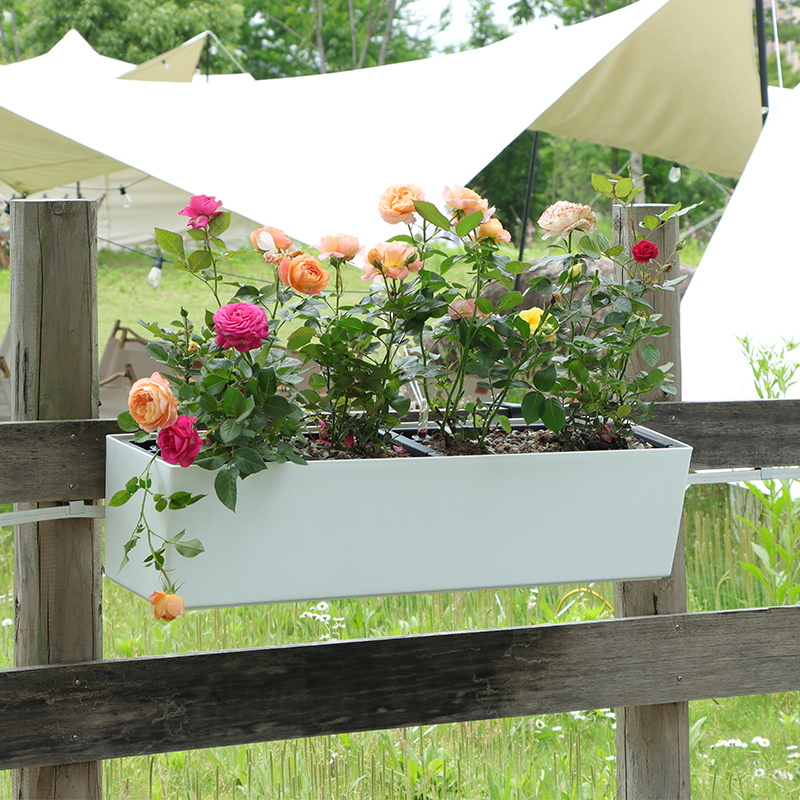Injection molding is a widely used manufacturing process for creating plastic pots, offering an efficient way to produce a large volume of durable and affordable gardening containers. Whether you are looking for pretty painted flower pots to brighten up your home or practical solutions to complement Large Planters Outdoor, injection molding provides consistent quality and design flexibility. In this article, we will explore the injection molding process, its advantages, and how it fits within the broader context of gardening and planter products, including accessories like a modern watering can.

At its core, injection molding involves melting plastic pellets and injecting the molten material into a mold cavity shaped like the desired pot. Once cooled and solidified, the pot is ejected, ready for finishing and distribution. This method enables manufacturers to produce a variety of pot shapes and sizes, from compact decorative items such as pretty painted flower pots to larger, functional containers that can be used alongside Large Planters Outdoor.
One of the benefits of injection molding is its ability to maintain tight tolerances, ensuring each plastic pot meets design specifications with small variation. This consistency is crucial when producing a range of products that must fit well in retail displays or meet customers’ expectations for uniformity. For example, a garden retailer may stock both pretty painted flower pots for indoor use and Large Planters Outdoor use for landscaping projects, offering a mix of materials and styles to suit different customer needs. Complementing these planters, a modern watering can might be marketed as an essential gardening tool, harmonizing function and style.
The process also allows for creative customization options. Injection molding supports the use of various plastic formulations, colors, and surface textures. Many manufacturers take advantage of this by creating plastic pots that resemble more traditional materials, such as clay or plastic. While these plastic pots may be lightweight and affordable, they can still achieve an aesthetic appeal comparable to Large Planters Outdoor. Additionally, pretty painted flower pots crafted with injection molding can feature intricate designs and vibrant colors that add a decorative touch to any space. These painted finishes often make the pots stand out, especially when paired with a sleek, modern watering can on display.
Production speed is another reason injection molding is popular in the flower pot industry. Once the mold is created, the cycle time for producing each pot can be quite short, allowing for high-volume output. This speed supports seasonal demand fluctuations, such as increased purchases of pretty painted flower pots in spring and summer. It also ensures that suppliers can meet the needs of landscapers who require Large Planters Outdoor for projects or homeowners investing in garden upgrades. Meanwhile, complementary products like a modern watering can continue to gain attention, as consumers seek convenient and stylish gardening accessories.
In terms of durability, plastic pots made through injection molding tend to be resilient against impacts and weather conditions, which is important for outdoor use. While Large Planters Outdoor are favored for their weight and traditional look, plastic pots offer portability and resistance to cracking or chipping. This makes them an attractive option for gardeners who want the visual appeal of pretty painted flower pots but need a lightweight alternative. Alongside these, a modern watering can made from durable materials completes the gardening toolkit, offering easy handling and efficient watering.
Sustainability is a growing consideration in planter manufacturing. Some injection molding processes now incorporate recycled plastics or bioplastics, contributing to environmental responsibility without sacrificing product quality. Gardeners who appreciate pretty painted flower pots that are eco-conscious can find options in plastic pots produced with these materials. Similarly, Large Planters Outdoor remain a natural choice for those who prefer traditional, long-lasting pots, but combining them with plastic alternatives broadens the range of choices available. A modern watering can crafted from sustainable materials can further enhance a gardener’s commitment to greener practices.
To sum up, injection molding plays a significant role in the production of plastic pots, enabling a balance between design, function, and affordability. It supports the creation of pretty painted flower pots with attractive finishes, as well as durable pots that complement Large Planters Outdoor in garden settings. Alongside these, the presence of a modern watering can in the product mix addresses the practical needs of plant care while appealing to contemporary design preferences. The versatility and efficiency of injection molding continue to make it a popular choice in the evolving gardening market.

 English
English 日本語
日本語 Español
Español Deutsch
Deutsch عربى
عربى

